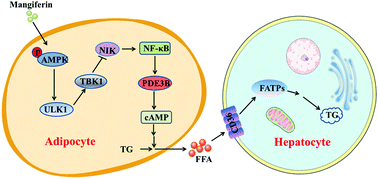Mangiferin protects against alcoholic liver injury via suppression of inflammation-induced adipose hyperlipolysis
Abstract
Adipose dysfunction is closely associated with alcoholic liver disease. The impact of mangiferin on ethanol-induced liver injury and the probable underlying molecular mechanism has not been sufficiently addressed. In the present study, mice were subjected to a chronic plus a single binge ethanol feeding to induce liver injury. In addition, the differentiated adipocytes from primary mouse adipocytes were isolated and used for the mechanism studies. Our study demonstrated that mangiferin protects against ethanol induced adipose hyperlipolysis by restoring PDE3B stability, which is associated with activating the AMPK/TBK1 signaling and suppressing the noncanonical NF-κB activation, leading to the reduction of free fatty acid release and the amelioration of ethanol-induced liver injury. Our findings identify that mangiferin ameliorates alcoholic liver injury via suppression of inflammation-induced adipose hyperlipolysis, suggesting that mangiferin might be a potential effective agent for the management of alcoholic liver injury.



 Please wait while we load your content...
Please wait while we load your content...